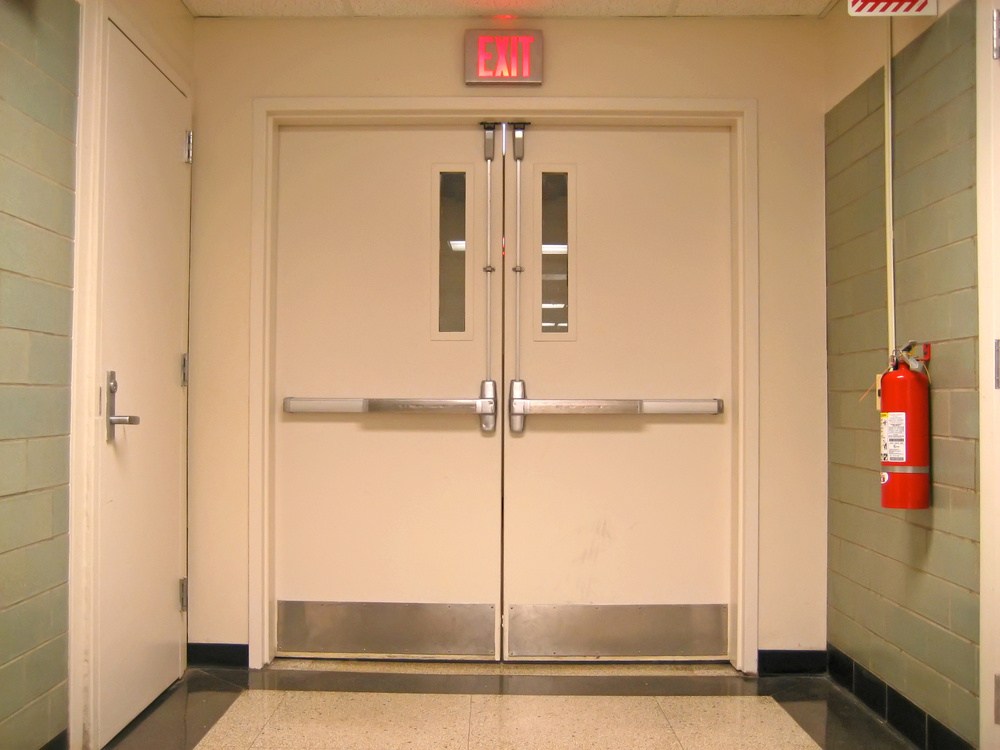
The Best Types of Locks for an Emergency Exit Door
Commercial property owners face a unique dilemma when it comes to keeping both the occupants and the contents of their buildings safe. Keeping equipment and belongings safe means preventing unauthorized people from gaining entry, but keeping occupants safe means ensuring that there’s an easy way to exit the building in the event of an emergency. If you aren’t careful, these two goals can quickly wind up at odds with each other.
The problem is that commercial buildings often have far more occupants than a security guard could monitor. If an emergency door has no locks at all, someone could easily slip in from the outside to steal valuable goods. If the door featured standard locks, it would be difficult, if not impossible, for occupants to make it out in the event of a fire or another natural disaster.
Commercial locksmith services can install specialized locks on emergency doors. Before calling to schedule a new lock installation, find out what you need to know about the best locks for emergency doors below.
Official Regulations Regarding Emergency Door Locks
The National Fire Protection Agency (NFPA) Life Safety Code addresses the use of locks on emergency doors, and this organization also publishes plenty of helpful information about permissible locking arrangements.
In its most basic terms, the Life Safety Code insists that everyone within a publically accessible building must be able to use any door in the path to the outside without requiring any special keys, tools, knowledge, or preparation. Local fire codes often apply, as well.
Types of Emergency Door Locks
Regulation-compliant emergency door locks can fall into one of three categories. However, you should note that not all of these types of emergency exit door locks will be appropriate for all situations. A commercial building that regularly hosts guests who are unfamiliar with the space will have different requirements than a small office building where every occupant can be offered training on how to use different types of doors and how to get out of the building safely in the event of an emergency.
Free Egress Emergency Doors
In almost all public-facing buildings, free egress emergency doors are required, even in low occupancy settings. These doors must be easy to open to the outside with just a simple motion and meet Federal Accessibility Laws. Building owners can’t require the use of keys, tools, special knowledge, or extra force to unlock free egress doors.
The rationale here is simple. Suppose your building regularly hosts strangers to the space and a fire breaks out. In that case, the building could lose power and leave occupants in a dark, smoky space, making it difficult to remain calm enough to engage more complex opening mechanisms.
The best way to secure free egress emergency doors is to install electric locks that meet regulations and work with the panic bars or touch pads required for free egress doors. The types of electric locks that are appropriate for this use include:
- Mortise locks
- Electric strikes
- Electrified cylindrical locks
- Electric panic hardware
All of these types of locks are similar in terms of practical operation. When an alarm system is triggered or someone pushes the door open, the electronic locks release and sound an alarm to alert the other building occupants of the danger. Just about all code-compliant commercial buildings open to the public feature one of these types of emergency door locking mechanisms.
Delayed Egress Emergency Doors
Certain types of public-facing buildings feature delayed egress doors. These emergency doors have hardware that activates timers when the panic bar gets pushed down, and an alarm is activated as soon as someone tries to engage the emergency door. While the alarm typically goes off right away, the locking mechanism will only release to allow egress after 15 or 30 seconds.
The locks used on delayed egress emergency doors must be fail-safe, meaning they will release without a delay if the fire safety system gets activated or the power goes out. Buildings that feature this type of door must also be equipped with a sprinkler or fire alarm system, and there must be a remote release for any delayed egress doors.
In addition to these precautions, you’ll also have to install proper alarms, signs, and emergency lighting on doors with delayed egress locks. It’s also important to use these locks judiciously because occupants cannot be required to pass through more than one delayed egress door on their way out of the building.
Controlled Egress Emergency Doors
Controlled egress emergency door locks can only be used in certain types of institutional buildings. More specifically, you can only install controlled egress locks in medical facilities where patients’ clinical needs require a greater level of exit door security. These doors will only unlock under very specific sets of circumstances.
The NFPA requires medical facilities that feature this type of door lock to have remote releases located in approved and constantly attended locations within the locked spaces, and the facility’s staff must be capable of unlocking the exit doors at any time. They don’t have to be fail-safe, though, meaning controlled egress locks won’t release immediately in the event of a fire, and they can automatically relock after being released remotely.
When it comes to lighting, sprinkler systems, fire alarms, and smoke or heat detection systems, the same regulations apply to controlled egress doors as those described above for delayed egress locks. These types of doors must meet NFPA regulations and the 2018 International Building Code specifications.
How to Choose the Right Emergency Exit Door Locks
If you’re having trouble choosing the right emergency door locks for your facility, don’t worry. Commercial locksmiths know how challenging it can be to navigate the complex rules and regulations that govern occupant safety. No matter what type of building you own and operate, we’re here to help you find a free, delayed, or controlled-egress locking mechanism that will meet your unique needs. Call (972) 945-7752 to speak with a dedicated expert or request additional information.
Joe, a former CIO and tech industry professional, has made it his mission to secure Dallas-Fort Worth (DFW) through the Action Lock Doc, Dallas Safe and Vault, and Summa Security brands. When he’s not running the show at the office, you’ll find him writing about commercial and residential locksmithing, access control, and safes.

